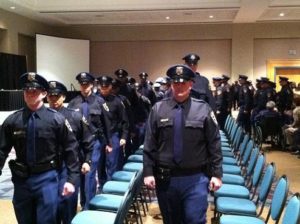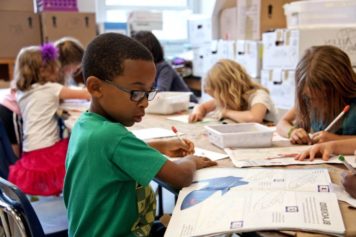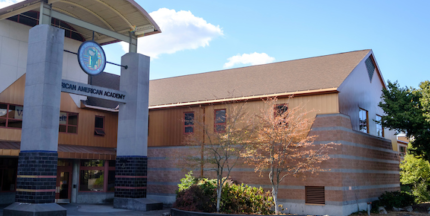
The lawsuit, which was filed by the Southern Poverty Law Center on behalf of eight former Birmingham high school students, puts under a microscope the harmful consequences of having schools patrolled by police officers—particularly for African-American students.
The suit uses incident reports to show that Birmingham school officers have used a pepper spray/tear gas combination product on more than 300 students since 2006, in 110 separate incidents at eight of the city’s nine high schools, according to SPLC attorney Ebony Howard.
In fact, the only school where chemical spray was not used requires high test scores for admission, the Marshall Project, a criminal-justice newsletter, pointed out in a story about the lawsuit.
The plaintiffs are all Black, as are an astounding 96 percent of Birmingham’s public school students, in a city with a Black population of 73 percent.
The SPLC suit alleges that police officers in the Birmingham schools use the spray to break up fights, spray bystanders who were watching other students fight and spray students who simply were talking back to teachers, administrators or other students.
The complaint details the case of a pregnant student who was sprayed and brought by police to a juvenile detention center, where she waited in holding cells with other students for parents to pick them up, still wearing clothes coated in the chemical. They never had any charges filed against them.
“We have not been able to locate a school district anywhere that uses chemical spray in the way that Birmingham does, meaning on a routine basis,” Howard said.
In case you’re wondering about the composition of the spray, it’s called Freeze + P, which can cause “severe pain,” according to its manufacturer and lead to coughing, burning, blindness, skin peeling, and difficulty breathing.
In the ongoing trial, the SPLC attorneys rested their case yesterday after hearing testimony from Daniel Coulombe, former police chief of the Hermiston City Police Department in Oregon. Coulombe said he has never heard of another police department using a chemical spray as potent as the spray Birmingham police use and, in 30 years of law enforcement, he’s also never heard of a school officer using mace on a student, other than in Birmingham.
After the plaintiffs rested, the defense filed a motion to dismiss, saying the SPLC had not proven this should be a class action suit.
After schools across the country began assigning more police officers to school in the 1990s in the wake of the alarming increase in school shootings, African-American educators and advocate have been contending that the practice has resulted in the explosion of the school-to-prison pipeline. As the drop in the nation’s crime rate meant fewer prisoners to fill the jail cells that were built by municipalities around the country as economic development projects, officials increasingly have been reaching into schools as a source for new inmates.
After a lawsuit was filed against the New York Police Department by the New York Civil Liberties Union for its disciplinary policies that were sending more and more students to jail, Mayor Bill de Blasio’s administration announced plans for widespread changes in school discipline practices.
As pointed out by the Marshall Project, the Birmingham case is unusual because these matters rarely go to trial.
Michael Cody, an attorney for the Birmingham Police Department, issued a statement on Jan. 18 defending the department’s actions. He claimed the plaintiffs were engaged in “disorderly conduct, which ranged from fighting and coming close to starting a riot in a high school cafeteria to repeatedly hitting an assistant principal. . . if the plaintiff students were tending to their reading, writing and arithmetic and behaving in an orderly fashion, they would not have been maced.”
The number of schools in the U.S. with police officers on campus went from 1 percent in 1978 to 21 percent in 2008—although ironically there were officers present on campus during many of the school shootings that have taken place.
Kevin Quinn, a school-based officer in Arizona and an executive board member of the National Association of School Resource Officers (NASRO), an advocacy and training organization, said school-based officers should be responding to crimes, not routine misbehavior.
“If a kid is in a hallway screaming and cursing out a principal, I’m going to go down the hallway and see that nobody is getting hurt,” he told the Marshall Project. “As far as what’s going to happen, the school is going to take the disciplinary action. We’re not going to take any legal action on anything that’s not a crime.”
In a study by Chongmin Na of the University of Houston and Denise Gottfredson of the University of Maryland, it was revealed that schools with police officers reported 12 percent more non-serious violent incidents (such as student fights) to law enforcement than schools with the same demographics who don’t have police officers on duty.
Birmingham police chief A.C. Roper acknowledged last year that the school system was “over-relying” on police officers to provide discipline.
“Too many of these kids have been criminalized, and that’s not the goal,” he said. “The current system is dysfunctional, and that’s putting it mildly.”


